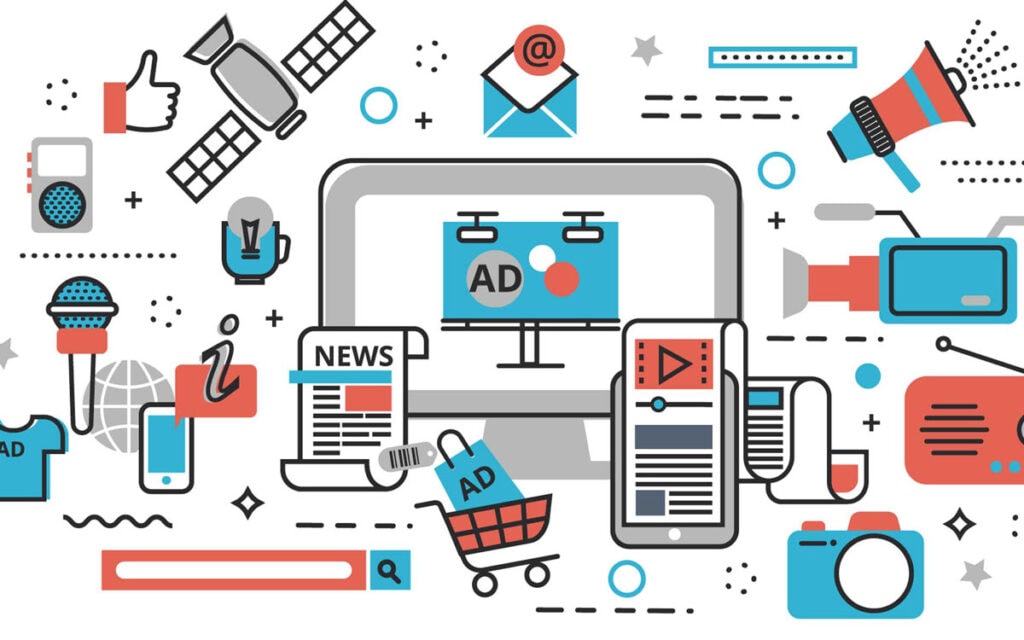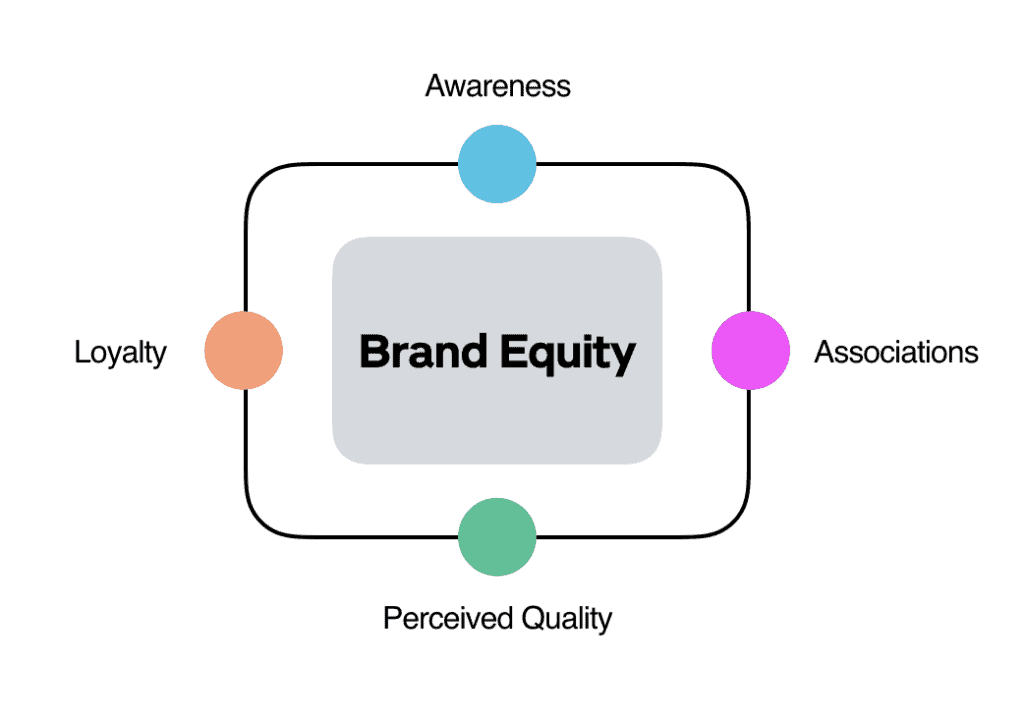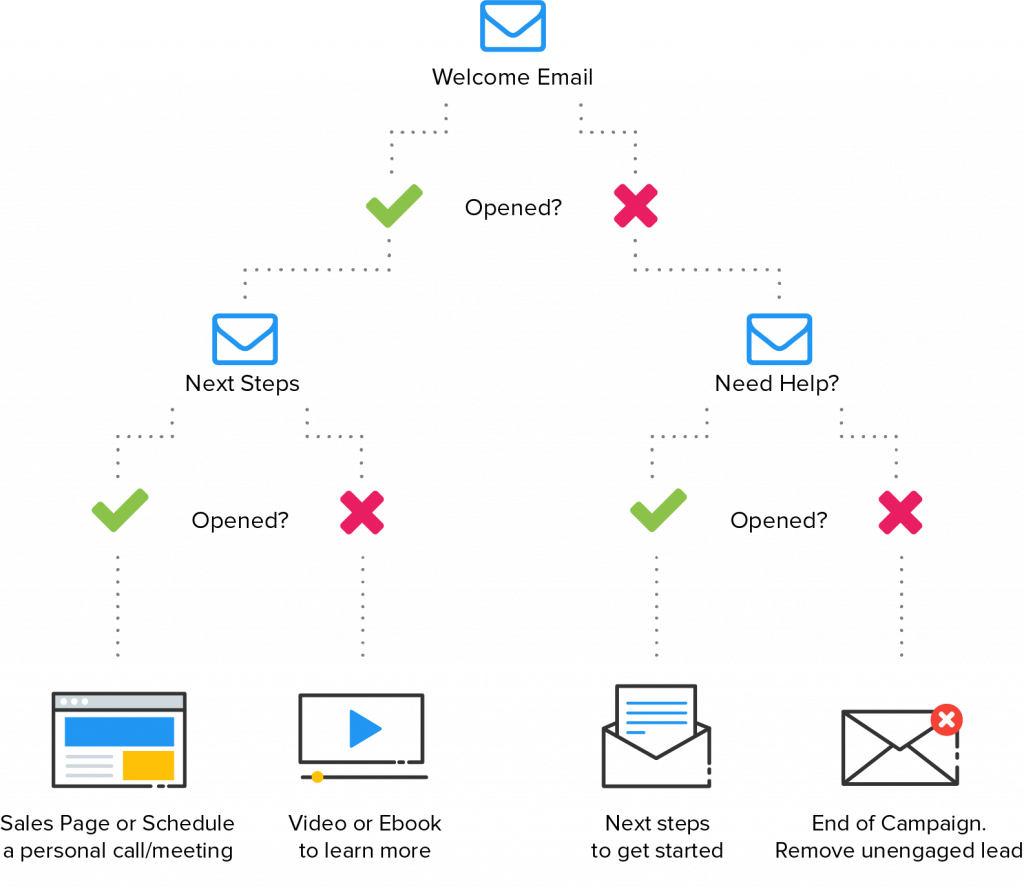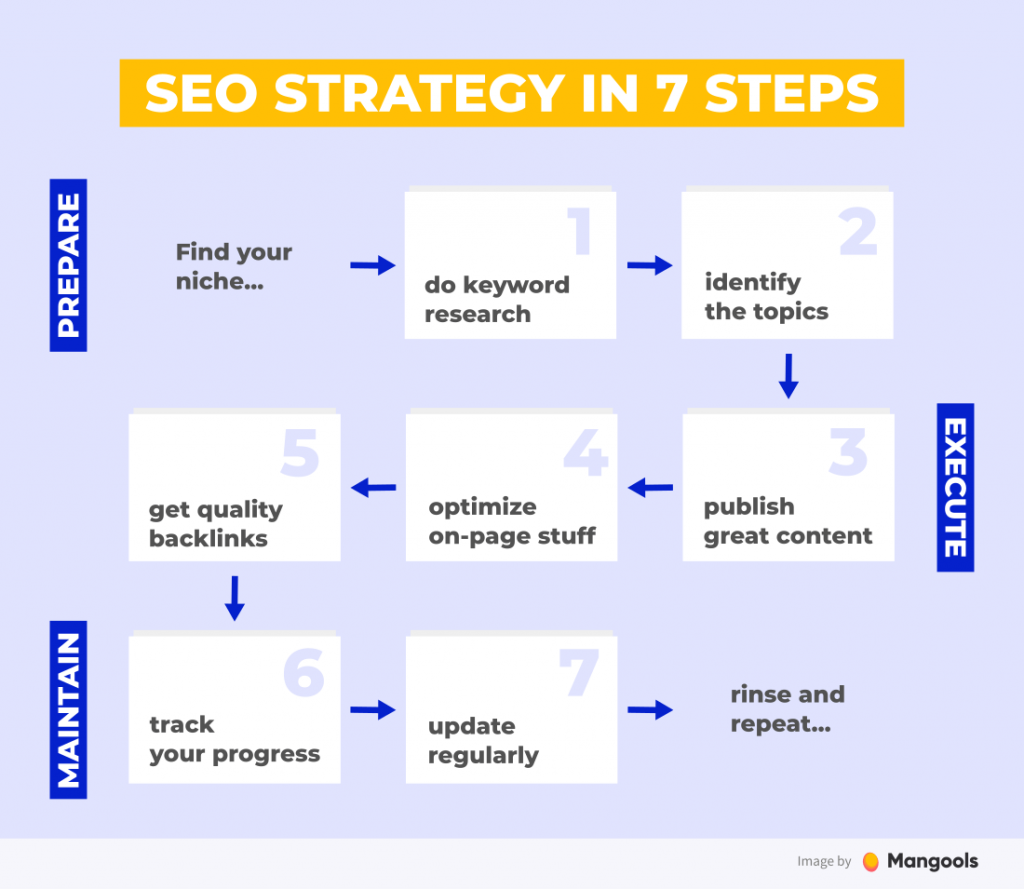How To Use Digital Marketing to Promote Your Business
Digital marketing has emerged as a powerful tool for businesses to promote their brand and reach their target audiences at an affordable cost. Being a cost-effective way of marketing, many companies have shifted their focus from traditional marketing techniques to digital marketing approaches. According to Deloitte's Annual CMO Survey study, companies allocate 13.3% of their marketing budgets to digital marketing, which is projected to increase to 5.6% in 2023.
The benefits of digital marketing are not limited to cost-effectiveness only; it also provides greater reach to businesses. With almost 65% of the world's population using the internet globally, companies can showcase their products or services to a vast audience willing to spend money.
From blogging to social media, content marketing to email marketing, and SEO to conversion optimisation, there are several ways to leverage digital marketing to promote your business. These tactics allow businesses to create engaging content for their audience and convert them into loyal customers. According to a report generated by the Content Marketing Institute, 88% of B2B marketers use content marketing techniques to reach their target audience.
The world of digital marketing is ever-evolving, making it challenging for businesses to keep up with the latest trends. From the latest social media platform to the updates in Google's algorithms, many things require attention to gain the maximum advantage. Businesses need to keep up-to-date with these changes and adapt their marketing strategies to fit accordingly.
Table of Contents
What is Digital Marketing?

Digital marketing is a form of advertising that uses electronic devices such as laptops, tablets, and smartphones to connect with consumers. The goal of digital marketing is to use these devices to connect with consumers through advertisements, promotions, and other messages.
The most common forms of digital marketing include email marketing, search engine optimisation (SEO), content marketing, and social media marketing.
Digital marketing can be used by businesses to increase customer acquisition, enhance current customers' experience, or develop new revenue streams.
Why it's effective
People can quickly consume digital content with smartphones, tablets, and computers. This has changed the way we purchase products and services, as well as the way we communicate. With the increased access to digital content, many people now expect businesses to offer a mobile version of their websites.
Companies that fail to use digital marketing tools risk missing out on potential customers.
The Different Types of Digital Marketing

Digital marketing has evolved rapidly across the globe. The primary goal of digital marketing is to promote your business cost-effectively. With the internet, there are many ways to market your business digitally. Digital marketing offers a broader audience than traditional marketing channels. With the help of new technologies, marketers can now reach out to consumers directly.
- Social Media Marketing: Social media marketing aims to increase brand visibility and attract potential customers. This marketing strategy involves making and publishing content on popular social media platforms.
- Search Engine Optimisation (SEO): This digital marketing technique improves a website's ranking on search engine results pages (SERPs). SEO helps companies increase their online exposure by targeting relevant keywords.
- Online Reputation Management (ORM): ORM is one of the most effective and efficient digital marketing strategies. The main objective of ORM is to manage the perception of a brand.
- Email Marketing: Email marketing is one of the best digital marketing strategies due to its low investment costs, high return on investment (ROI) and the ability to target specific audiences.
- Content Marketing: Content marketing involves creating high-quality, relevant content for prospects and customers. Content marketing creates a sense of brand loyalty by keeping users engaged and ensuring they have a positive experience.
- Mobile Marketing: Mobile marketing is a modern method of promoting products and services using mobile devices to drive sales.
- Website Optimisation: This type of digital marketing includes techniques to optimise a website's functionality, usability, and speed.
- Influencer Marketing: Influencer marketing is a modern form of marketing that involves enlisting individuals known for their influence and popularity among their followers.
- Conversion Optimisation: This digital marketing strategy maximises a website's conversion rates. It focuses on the processes that drive traffic from the digital to the offline world.
- Email Marketing Campaigns: Email marketing campaigns are practical tools for connecting with customers. They allow you to send personalised messages to your subscribers.
- Adwords Marketing: Adwords marketing is advertising that uses pay-per-click models to generate leads and conversions.
- Display Advertising: Display advertising uses digital displays to deliver advertisements to users.
- Remarketing: Remarketing is a type of marketing used to reach consumers who have previously visited your website.
- Mobile Advertising: Mobile advertising is becoming a vital part of digital marketing because of the growing number of people using mobile phones.
- Web Design: This is essential to a successful digital marketing campaign. It includes optimising a website's aesthetics, functionality, and user experience.
- Video Marketing: Video marketing is an efficient, affordable way to generate website traffic.
Digital Marketing Strategy
The digital marketing strategy (DMS) is the basis of all other aspects of the marketing program – positioning, targeting, marketing, advertising, content, PR, and events.
In simple terms, a DMS helps you:
- Create a digital platform to help you connect with your target audience.
- Identify the specific ways you will get noticed and communicate with your audience.
- Establish the ways you will attract, capture, and convert your prospects.
It also helps you:
- Understand how your digital assets work together.
- Plan how you will communicate effectively across channels.
- Identify what your customers want from you.
- Develop a strategic plan that integrates and aligns with your current and future needs.
- Use the right tools and platforms to reach your audience.
Create Social Media Campaigns

Social media marketing is one of the best ways to promote your business. This section will explain the social media channels you can use to promote your business.
There are multiple social media channels that you can use to promote your business. These channels are Facebook, Twitter, LinkedIn, Pinterest, Instagram and Youtube.
1: Facebook
Facebook is one of the biggest and most popular social media platforms. It has a vast number of users. You can use it to promote your business and get more leads.
There are two kinds of ads that you can use to promote your business. These are the organic and paid ads.
Organic ads are free, and they don't cost you any money. These ads appear in your feed; when somebody clicks on them, they go directly to your profile page.
Paid ads are advertisements that you can buy using your own money. They show in your feed, and once a person clicks on it, they go to your website.
Here are the two types of ads that you can use to promote your business on Facebook:
- Video ads
- Sponsored posts
Video ads are the best way to advertise your business. You can create videos for your business and upload them to your Facebook page. You can upload these videos for both paid and organic ads. When somebody clicks on the video, they go directly to your profile page.
Sponsored posts are the second best way to advertise your business on Facebook. You can create sponsored posts for your business and post them on Facebook. You can also purchase these posts and post them on your wall. Your friends will receive a notification that your business has liked them.
People who click on these posts will be redirected to your website.
2: Twitter
Twitter is a microblogging site which allows users to share the things they're interested in. It is one of the oldest social media platforms that are still active. You can use it to promote your business and get more leads.
Official Twitter categories
You can choose any category from the official list that you like.
- Business
- Education
- Entertainment
- Government
- Gaming
- News
- Other
You can also add your category to your Twitter profile. You can add as many categories as you want. Twitter offers you three kinds of advertising options. These are the free, the paid and the self-serve.
Optimise your Website
Website optimisation is making changes to your website to load faster so users can navigate your site easily. There are several techniques that you can use to optimise your website. Some of them are free, and others cost money.
Optimising your website can take time. It is a long-term process. So, if you are looking for instant results, you should forget about it. However, if you want to increase your online presence and drive more traffic to your website, you should take up website optimisation as it helps improve your ranking in search engine results.
This section will tell you some tips and tricks to optimise your website.
There are three basic rules that you must follow to optimise your website.
Rule #1: Have a mobile-first website
The first rule is ensuring your website is optimised for mobile. A mobile-first design means your website should load faster, and the navigation and content should be laid out correctly.
Most people use their smartphones to check their emails, surf the web, shop, read the news, and check their social media accounts. A mobile-friendly website loads faster on smartphones and makes it easier for customers to browse your website.
Rule #2: Use responsive design
A responsive website allows your website to adapt to any internet device. If someone visits your website on a phone or tablet, the layout will differ from a desktop computer.
Responsive web design is one of the easiest ways to optimise your website. However, testing it on all devices is crucial if you have a responsive website.
For example, you can use Google's PageSpeed Insights.
This tool allows you to check your website on all devices. It is entirely free. All you need to do is enter the URL of your website, and you can use the tool to test it.
The tool shows you how your website looks on a smartphone, laptop, tablet, and desktop computer.
It also helps you detect website problems like slow loading, broken links, and images.
Rule #3: Use a content management system (CMS)
Content management systems are software that allows you to manage the content of your website. They let you add, edit, and delete content.
A CMS saves you time and makes it easy for you to update your website. You don't have to worry about coding or web design.
A CMS helps create an attractive website and lets you add new content without problems.
Develop Your Brand

Developing a brand is about creating an identity that will allow your business to stand out and establish a brand identity. Brand building is an ongoing process. Your brand will evolve as your business grows and develops.
Brand identity refers to elements representing your company, products, and services. Brand identity establishes your corporate identity and helps customers associate your brand with your company.
Here are some factors that should be considered when designing a brand identity:
Colour
Colour is one of the most critical elements of a brand identity. Colours create associations in the minds of consumers. For example, yellow may signify safety, while red may suggest danger.
In your company, select colours that are meaningful and memorable. A simple colour palette will make it easy to maintain consistency in your marketing materials.
Typography
Typography refers to the arrangement and use of type in a design. Good typography includes the following:
- Clear headings
- Use large, bold, and clear text
- Use appropriate leading
- Use short paragraphs
Font size
Font size is another crucial factor in creating an effective brand identity. Make sure your font sizes are large and bold.
Logos
Logos are an essential part of your brand identity. They should be consistent and visible.
Layout
A good brand identity design should provide a solid visual hierarchy. This is an organisation where images, headlines, and other elements are placed at different levels in a design. A robust visual hierarchy allows for better readability.
Brand Style
A brand style describes how you would like your brand to look. Is it professional, fun, or something in between? What style is right for your company?
Use Email Marketing

Email marketing is a powerful tool that you can use to market your business. You can use email marketing to send promotional messages, newsletters, announcements, and event invitations to your customers, potential customers, clients, and fans.
Email marketing is essential because it allows you to communicate with your target audience personally. Your customers know they can expect a response whenever they contact you via email.
Using a clear subject line for your emails is essential because this is one of the main reasons people open your email. You should also include a message that offers something of interest to your target audience. This way, customers can open your email and spend less time scrolling through their inboxes.
You should create a good signup form on your website so new customers can access special offers and discounts. You can also create a free trial offer and ask customers to provide their contact information in exchange for this free trial.
You should use an autoresponder service to automate your emails. This will save you time and ensure that your customers receive regular emails from you.
Advertise Locally and on Search Engines
We have heard many complaints from businesses frustrated by poor Google rankings. Local SEO is one of the most effective ways to promote your business online. Submitting your details to Google will help your business reach more local customers.
There are three main reasons to advertise locally:
- Your website will appear on a list of local businesses displayed on a Google map and results when someone searches for ‘local services' or local businesses.
- Google displays the phone number and address of businesses that appear in the local results, making it easy for visitors to contact you.
- You will appear on Google Maps when people use an app to search for nearby businesses, making it easier for them to find you.
If you advertise on local business listing sites, you can target potential customers according to their location. This means your adverts will only appear in suitable locations, increasing the likelihood of converting them to leads.
Create Lead Generation Campaigns

Lead generation is one of a business owner's most challenging parts. You need to work hard to get new clients and sales. However, if you do your part correctly, you can generate more leads and make a lot of money.
But what does a lead mean? A lead is an individual or group interested in your business. They have identified their needs and are now searching for a solution.
A lead is different from a customer. A customer is someone who has purchased something from you. Once they have done so, they become a customer.
Leads are different. They are potential customers, but they are not yet your customers.
Let's discuss how you can generate leads for your business.
Generate Leads Using the Right Strategy
If you want to generate leads, you need to develop a strategy to help you achieve that goal. It would help if you thought about why you want to generate leads.
It should be because you want to bring in more customers. If so, you must know precisely what products or services you offer. And you need to identify the right audience for your products.
If you want to grow your business, then you need to know your target audience. Who are they? What do they like to do? How can you benefit from this information?
The next step is to develop an ideal lead. You must understand who they are and why they are interested in your product or service. This means that you need to build a profile of your ideal client.
For example, a lawyer needs to know about their potential clients. A dentist needs to know the medical conditions their clients suffer.
Build a Content Strategy
A content strategy is a plan or blueprint that helps businesses to publish content that aligns with their company's goals. Here, we will discuss the three pillars of a successful content strategy and how to implement each.
1: Content Strategy
A content strategy is a plan or blueprint that helps businesses to publish content that aligns with their company's goals. A successful content strategy should be holistic, including elements such as SEO, social media, PR, branding, and much more.
Here, we will discuss the three pillars of a successful content strategy and how to implement each.
2: Planning:
Planning is the second pillar of a content strategy. A content strategy can be divided into different sections, which will help you to plan your content.
Before planning, you need to identify the type of content that would serve your audience best. For example, do you want to write about how to start a business, or do you want to share stories about how successful entrepreneurs grew up?
After planning, you need to identify your audience and understand their needs. For example, you may write about the benefits of using a service like Facebook Ads Manager.
3: Execution
Execution is the third pillar of a content strategy. This is where you can start working on the different types of content.
For example, if you write about using Facebook Ads Manager, you should start by creating a Facebook ad and uploading it to the Facebook Ads Manager platform. You can then use the same method to create ads for other platforms like Google Ads, LinkedIn Ads, Twitter Ads, and Instagram Ads.
Develop an Effective SEO Plan

There are several ways to improve your site's visibility, but one of the most influential and cost-efficient methods is to develop an SEO strategy. The best part is that you can easily make a plan yourself by following these simple steps.
Find out who your customers are
Before building an SEO strategy, you should identify your target audience. Find out what keywords they use to search for a product or service similar to yours.
If you don't know exactly who your potential customers are, you might want to do some market research. For instance, you could ask your friends and family for their opinion.
Visiting your competitor's websites and analysing their page titles, meta descriptions, and home pages is also helpful.
Create a keyword list
The next step is to create a list of keywords. There are two types of keywords.
- Long-tail Keywords: These keywords are longer and easier to rank for. They have a greater chance of bringing in traffic. However, it will take longer to reach the top.
- Short-tail Keywords: Short-tail keywords tend to have higher competition. To compete in this type of keyword market, you need to have more money and resources.
However, since these keywords bring in more traffic, you should include them in your plan.
Make sure you use your keywords in the title and description of your website. You may also want to use them in your URL. This is to make it easy for people to find your site when they search for those terms.
Build links
Links are the foundation of SEO. It helps search engines understand the importance of your content. You should build links to relevant pages within your site.
If you have an eCommerce store, you should have a link to each product. This makes it easier for visitors to buy directly from you.
Conclusion
Your digital marketing strategy should include a mix of tactics to create a solid online presence. You should have a robust social media strategy with a healthy balance of Facebook, Twitter, LinkedIn, Instagram, Pinterest, and YouTube accounts.
You should also have a strategy to increase your site's traffic through SEO, pay-per-click, and content marketing. These tools and strategies will help you create buzz about your business and drive traffic to your website so you can sell more effectively.
Get my free guide on using digital marketing to promote your business today.
